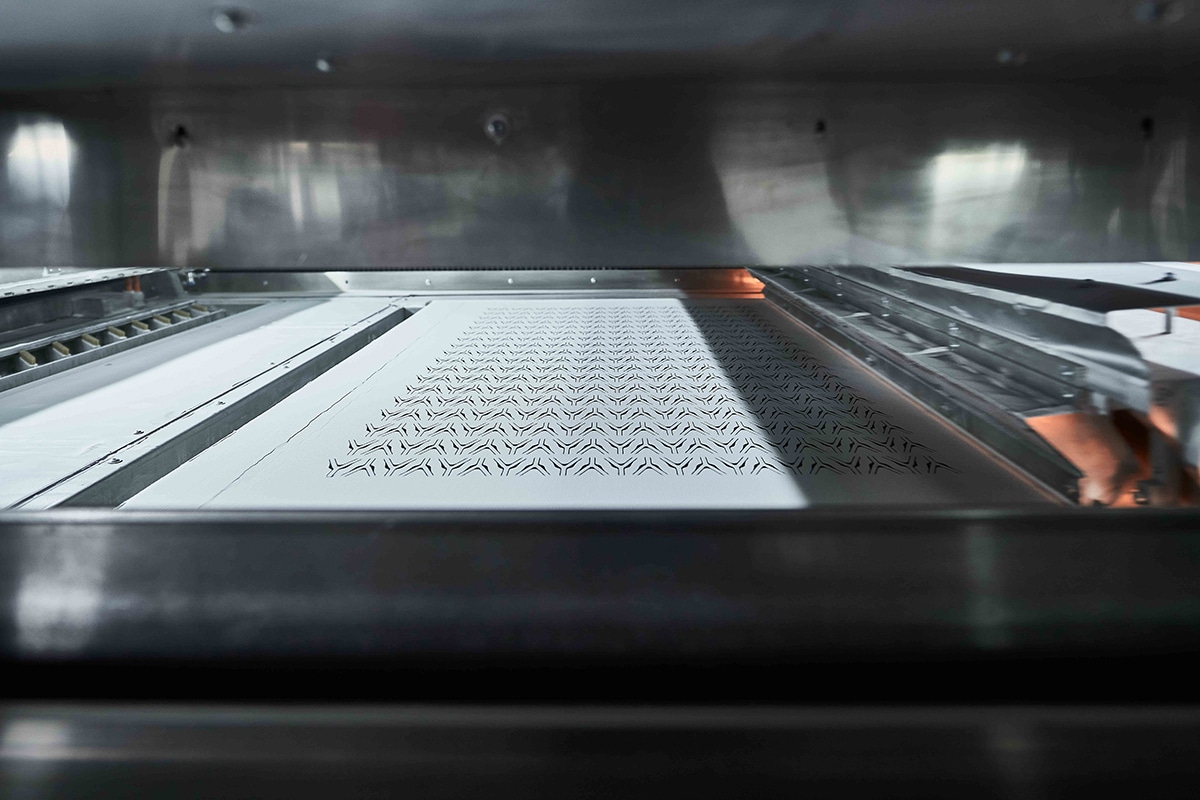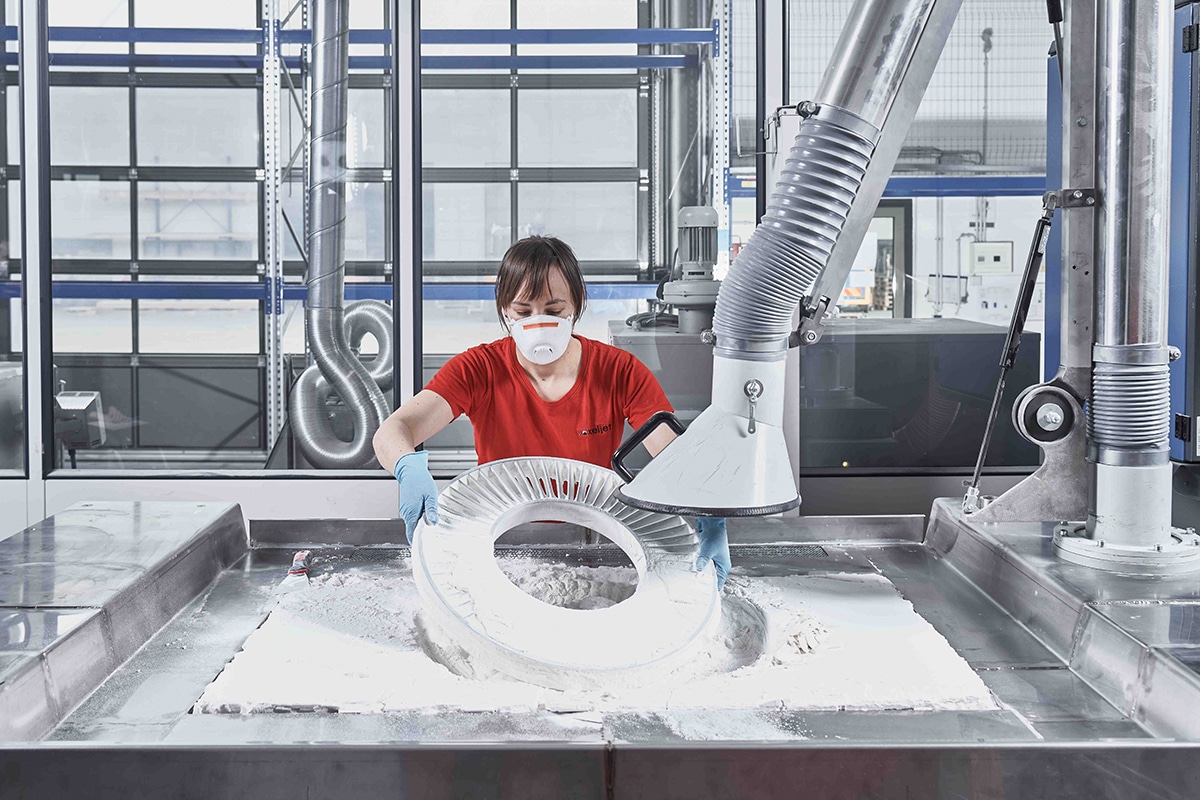Brose, a global automotive supplier, is now confirmed as one of the first participants in the High-Speed Sintering (HSS) Early-Access Beta Program for the VX1000 HSS 3D printer. The company will work with voxeljet AG as a cooperation partner to further develop the VX1000 HSS for use in additive series production of polymer components for the automotive industry. With HSS, voxeljet combines the advantages of two existing additive technologies: selective laser sintering and binder jetting, giving the benefit of both SLS part properties and binder-jetting productivity. The new VX1000 HSS 3D printer has a significantly larger build volume and a faster print speed than previous systems, enabling true additive series production.
The aim of the HSS Beta Program is to test the features and capabilities of the VX1000 HSS in an extensively designed program for use in industrial production environments. After a joint three-month development phase at voxeljet’s headquarters in Munich, the system will be moved to the Brose Additive Manufacturing Center in Coburg, integrated into the production environment and optimized for customer-specific applications.

The large-volume build envelope of the VX1000 HSS is suitable, for example, for the series production of small components such as these spray water distribution nozzles (15,000 pcs/box).
“We chose the VX1000 HSS for two reasons: first, this technology offers us unique productivity. The increasing trend towards ever more complex components with material-saving lattice structures, detached from the packing density in the build space, is translated into a consistently fast print time in the HSS process compared to laser-based technologies. With maximum part sizes of up to 1,000 x 450 x 180 mm, we can print door modules in one piece, for example. Another decisive factor was that both the process and the materials are open. This means that in addition to the initial PA12 configuration, we can also test and qualify materials on the system that cannot currently be processed using SLS technologies, for example,” explained Christian Kleylein, Additive Technology at Brose.
In addition to the production of prototypes and pilot series, Brose plans to implement the VX1000 HSS for additive series production. In particular, the company is focusing on so-called “end of life” components for 3D printing. These are spare parts for discontinued car models.

“Sustainability is a top priority at Brose. Thanks to additive manufacturing, tools for ”end of life” components no longer need to be stored and spare parts pre-produced, but can be stored digitally and retrieved and printed on demand. With the HSS technology and its high printing speeds, we can begin to reduce physical storage for both tools and spare parts,” added Kleylein.
Manufacturing on Demand
“We are delighted to have Brose as one of our first collaboration partner for our HSS Beta program,” said Rudolf Franz, COO at voxeljet. “Ever since our foundation in 1999 and as part of our Mission M, we have been striving for the establishment of a new manufacturing standard and redefining additive mass production. We are pleased to welcome Brose as an innovative partner with whom we can continue pursuing this vision and to launch a new era of additive industrial production.”
“Here at voxeljet, we recognize that true production means customizing the process around the application. We do not intend to provide an off-the-shelf solution that does quite a good job, but instead, provide an optimized solution that does a great job! The Beta Program with Brose is, therefore, an important stage for us to understand the demands in automotive production and adjust our machines to match those demands in ways that no other AM solution can achieve,” commented James Reeves, Global Director of Polymer Sintering (HSS) at voxeljet.
The focus of further development of the VX1000 HSS is in particular on adapting, optimizing and integrating the machine to the specific process and production conditions at Brose. In addition, the flexibility and adaptability of the HSS technology to various applications will be tested through the direct developer support on a hard- and software level included in the program.
First printed parts and further information about the VX1000 HSS will be available at the upcoming formnext trade fair from November 16 – 19 in Frankfurt.
* This article is reprinted from 3D Printing Media Network. If you are involved in infringement, please contact us to delete it.
Author: Davide Sher


Leave A Comment